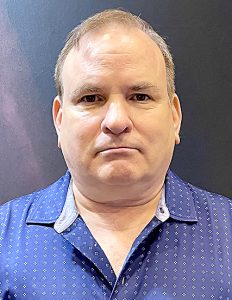
What does Metallurgical High Vacuum Corporation do for the industry?
We remanufacture pumps. That’s probably the core of our business, but that’s changing because of what’s happened over the last two years. Our customers are coming to us with a wide variety of service questions, and we’re troubleshooting entire systems now, not just pumps.
In addition to that, customers have asked us to start designing equipment that we hadn’t designed before, which are related to the heat-treat business. For instance, one example is we’re being asked to design a furnace door and then manufacture it for this customer. Another example is we designed and manufactured a rotary feed test stand. The customer called us and said, “You are repairing our vacuum equipment. Can you design this?” We looked at it and said, “Yes. We’ve got the engineering expertise. We’ll do it.” We designed it and manufactured it in eight weeks. So, we’ve become much more diverse in what we do. It is a more turnkey approach.
What steps need to be taken in order to analyze and restore pumping equipment to OEM specifications and tolerances? What do you do to make that happen?
In our particular case, first it’s the analysis. We will tear a pump down, take all the measurements and compare them to what the OEM specifications are. If it requires replacing a worn part, we’ll purchase and install or manufacture it. We machine other parts onsite that can be returned to OEM specs to make sure everything is exactly to those specifications. By not outsourcing our machining, we control quality. But we don’t stop there.
Our testing is rigorous and validates the pump will perform when installed. A standard test is to run the pump for 20 hours. But that simply tells you that the pump runs. It doesn’t tell you how well it functions in the process. We have a test stand, which we constructed with PLC controls, that has the capability to draw the pump down to process required levels. It is measured against the performance to the published curves of when that pump came off the assembly line. It has to match up, or we go back in and determine what has to be done.
Your onsite services include predictive maintenance and preventive maintenance. What’s the difference between them?
Predictive maintenance is being able to determine ahead of time, “This equipment will approach failure in this number of hours.” Preventive maintenance is maintaining the equipment and extending its life-cycle as long as possible. That’s how to distinguish between the two terms. We just recently had a customer who came to us and asked, “What can we do so that we don’t have process interruptions? These pumps are unreliable and failing frequently.” We developed a monitoring program that included testing the pump oil at regular intervals. Oil cleanliness has a direct bearing on pump failure in many cases — especially in liquid ring pumps. Every month we’ll sample the oil on that particular series of pumps and determine the solids content. When it gets to a point where oil needs to be changed, that’s the point where we now have set the preventive maintenance schedule. We’ve also taken that a step further and looked at one of our customers, who is cutting edge. Vibration analysis has been performed, and a baseline has been established. We worked together and developed a run time setpoint for the pumps. In a certain number of hours, each pump is pulled before it goes to failure. Because this procedure has been established, the re-manufacture cost is substantially reduced.
You’re able to reverse engineer obsolete parts. How do you approach a customer when they bring you that challenge?
We’ll review the economics. If he’s a large customer and has a pump that is obsolete, which he does not want to replace, we will reverse engineer and produce it. If it’s a machined part, we’ll make a CAD drawingproperly toleranced with material and heat-treatment callouts as needed. If it’s a casting, we’ll make a CAD drawing and get a foundry to quote on patterns and the casting. And then we machine it. We’ve got four CNC Mazaks, and we’ll turn the obsolete part into an exact replica. That engineering is how we’ve propelled ourselves into the newer field of designing things that are related to the pump systems but not part of the pump system.
Where do you see the industry in the next decade and your place in that future?
Most industries have had a hiccup, but especially in aerospace. But currently, that industry is rebounding nicely. Our place in that future is to assist customers with improving their systems, reducing equipment costs and maximizing production time.
What types of aerospace projects do you work on?
We work with the subcontractors, who are the companies that make jet engines, turbine blades — all of the vacuum heat-treat processes. This includes the titanium and aluminum processed parts that are assemblies in commercial and military aircraft.
Anything else you’d like to mention?
Heat treating is a stable business. Our service business was 5 percent of our gross revenue, but with the shift in demand, we are now growing at 20 to 25 percent in that sector. And that’s not just standard preventive maintenance, that’s heavy trouble shooting of entire systems.
MORE INFO www.methivac.com
























